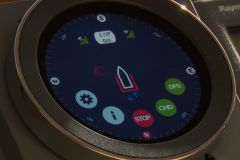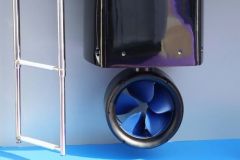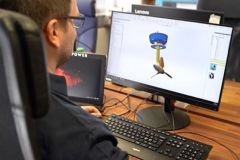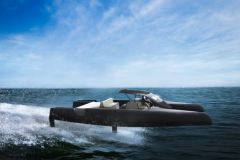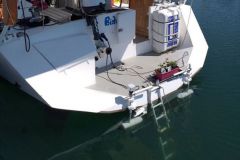The range of electric and hybrid motorization solutions currently covers a large part of the needs for pleasure boats for power ratings of 3 kW to 40 kW (6 to 80 HP) (double for a catamaran). These values are valid if we stay in low voltage (48V), but can increase enormously if we choose high voltage. There remains the inevitable question of autonomy. Solving it is complex, because it depends on :
- The storage capacity of the battery park. This is limited for reasons of weight and size, but especially for budgetary reasons. The price per kWh of a good Lithium battery is 800 to 1000 euros.
- The possibility of producing energy on board: solar panels, wind turbines and especially hydroelectricity (production of energy by the propeller, but only valid on sailboats)
- The possibility to use or not another mode of propulsion: the sail.
- The desired cruising speed (the power evolves with the cube of the speed...)
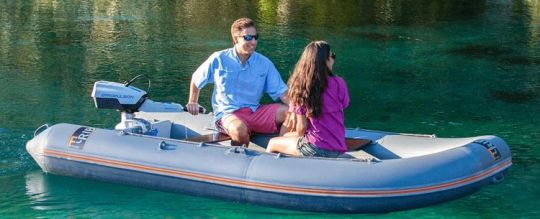
The electric motor is better suited for slow boats
It is therefore understandable that for motorboats, which often do not have much space for solar panels and cannot use hydrogenation, 100% electric motorization will be more complex. It will be more suitable for heavy displacement or semi-planing hull boats, small dinghies, small fishing boats or river navigation for day sailing programs.
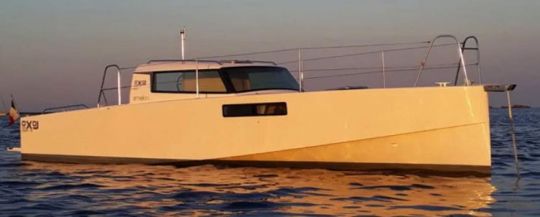
Motorboats requiring high power to be able to go fast and lift off will be limited by the number of batteries to be taken on board. For example, for a 100 hp / 70 kW equivalent. It takes 70 kWh of battery for one hour of navigation at full power, which entails a cost (about 70 000 euros) and a rather high weight. One of the possible ways to explore for these boats is undoubtedly the foil which, by supporting the boat, could considerably reduce consumption.
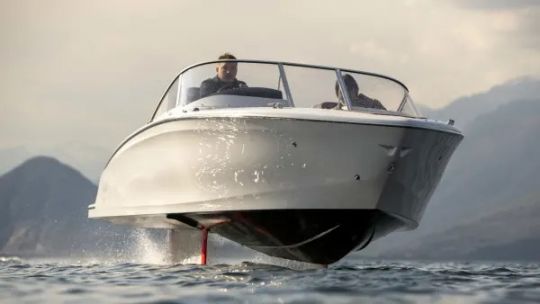
For sailboats, it is very different
The sailboat is by definition a hybrid boat: engine + sail. Consequently, the subject of autonomy does not arise in the same way, especially since it is often possible to have a significant production by relying on photovoltaic and hydro-generation. Several configurations are then possible depending on the program and the boat.
A no-compromise choice, 100% electric
On a sailboat, it is possible to choose a 100% electric configuration that relies only on its batteries and its energy production to sail. But this requires careful consideration if you don't want to limit yourself to day trips. Several conditions must be met:
- To start with, you need to have the right boat. A boat that is fast under sail even with little wind, and fast under sail in order to be able to hydro-generate, that is to say to produce electricity by using the electric motor like a hydro-generator. The SERVOPROP of OCEANVOLT allows for example to start producing at 5 knots and to quickly reach 1 kW at 7 knots. It is a system of variable pitch on the propeller which adapts the pitch for propulsion, reverse, but also for hydrogeneration. It is today the Rolls of the hydrogeneration.
Hydrogeneration is a key point of autonomy. By alternating periods of sailing and motoring, the autonomy is unlimited. With this type of boat, 5 hours of sailing can easily cover the consumption of one hour under motor. For a light and fast catamaran, it is even possible to sail for one hour for one hour of motoring! - Make a precise calculation of your on-board consumption (excluding the electric motor) and do not use the big consumers (induction hobs, coffee maker, electric winches, freezer...) when you do not want to come back to port regularly.
- Install as many solar panels as possible which, even if they can't cover the engine's consumption, will cover at least the consumption of the on-board comfort services.
- To have a compatible program by freeing oneself as much as possible from timing obligations and to choose one's weather slots and routing in order to favor sailing while hydro-generating. Contrary to what one might think, a long trip program where one can take one's time is much more favorable than a summer cruise in the Mediterranean with imposed departure and arrival dates.
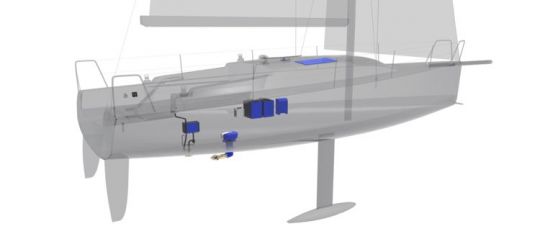
The sailing catamaran, the good student for electric motorization
A light and fast catamaran on which we can install a lot of solar panels (flexible and rigid) and which has 2 electric motors for 2 times more hydrogenation is the ideal boat for this type of propulsion. A fast monohull of the Salona 450 type with 2 OceanVolt Servoprop engines would also be suitable.
Hybrid" solutions
1 - The electric boat with range extender
If you want more serenity and extend your range, you can very well install a small AC generator of 4 or 5 kW very light (70 kg) in addition to the electric motor. It will be used to recharge the batteries via the shore charger if there is a long period without wind. The generator will also allow to return to the port at low speed if the batteries are completely empty. The speed will be limited in this case by the power of the charger and the generator.
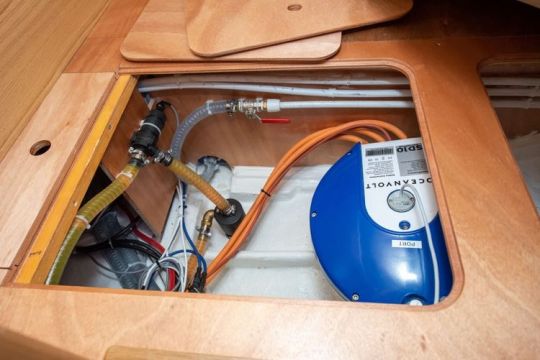
2 - The "dielectric" solution with a 48 V DC generator
This time it is a question of installing a powerful generator. In this case, the power of the group is chosen to ensure the desired cruising speed even when the batteries are empty. The group will feed directly the engines in 48 V, the surplus of energy will recharge the batteries. It is a very flexible solution offering the possibility of sailing in 100% electric mode, on the generator or on both according to the conditions.
Experience shows that fuel consumption is reduced by 80% compared to a 100% diesel engine. It also offers the possibility of having all the modern comforts on board (heating, induction cooker, ice maker, diving compressor...) without running the traditional diesel engine several hours a day. Using the inboard engine at anchor to recharge the batteries via the alternator has a very low efficiency. It is also very bad for the engine (which turns without forcing)... and for the neighbors. The nuisance is greatly reduced with a generator, which moreover always runs at full load.
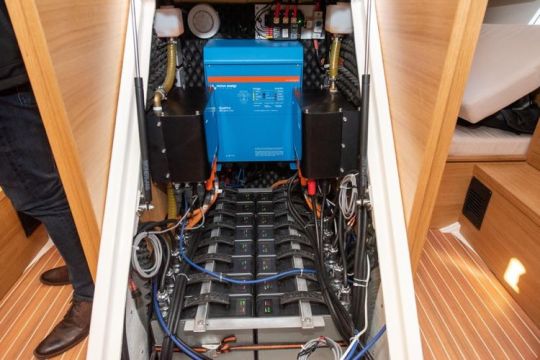
3 - The hybrid boat in parallel
This is the solution that is similar to the one used in hybrid cars. A combustion engine and an electric motor are combined. In this configuration, the electric motor and the diesel engine are connected to a common transmission. A clutch system allows the use of the diesel engine or the electric engine or both at the same time. The solution looks attractive on paper, but only works on large boats. The price and the weight of the clutch system are not adapted to this day to pleasure boating.
4 - The 50/50 for twin engine boats.
With a two-engine boat, as is often the case on a catamaran, some users have chosen to keep a diesel engine in one hull for long crossings, and an electric motor in the other hull for harbor entries and exits, and coastal sailing. An Integrel-type recharging system allows the available torque not used by the diesel engine to be used to charge the battery pack. The system works very well even if it requires some experience for harbor maneuvers with 2 engines that do not react in the same way, and that it is necessary to increase the power of the thermal engine to be able to move the boat on one engine while charging the batteries.



